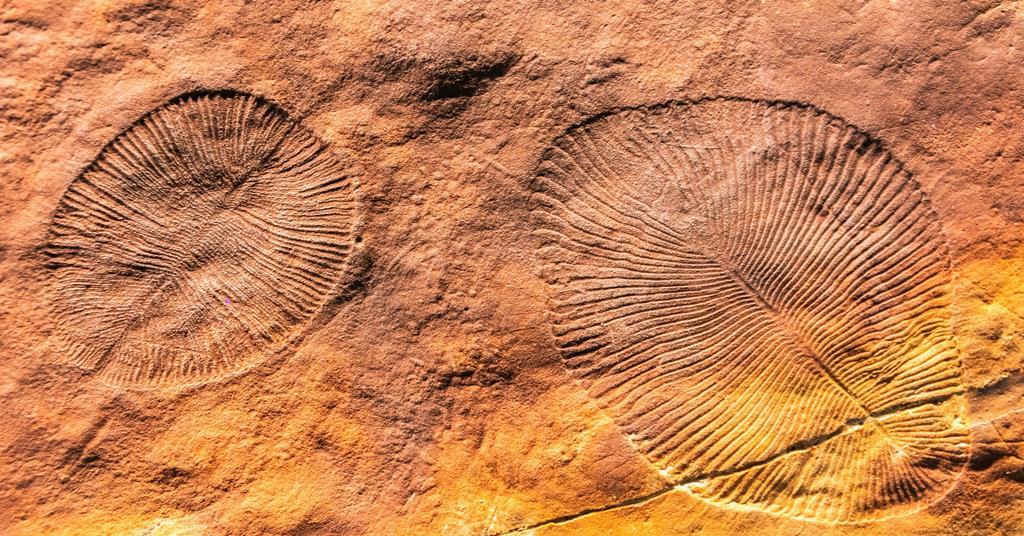Ediacara-Fossilien enthüllen Ursprünge der Biomineralisation, die zur Ausbreitung des Lebens auf der Erde führte.

24. September 2023 Feature
Dieser Artikel wurde gemäß dem redaktionellen Prozess und den Richtlinien von Science X überprüft. Die Herausgeber haben die folgenden Merkmale hervorgehoben, um die Glaubwürdigkeit des Inhalts zu gewährleisten:
- Fakten überprüft
- Peer-reviewed-Publikation
- Vertrauenswürdige Quelle
- Korrekturgelesen
von Hannah Bird, Phys.org
Das Leben auf der Erde begann mit einem einzelligen Mikroorganismus, während der Aufstieg zur Vielzelligen Welt, in der wir leben, auf einen wichtigen chemischen Prozess namens Biomineralisation zurückzuführen ist, bei dem lebende Organismen verhärtetes mineralisiertes Gewebe, wie Skelette, produzieren. Dieses Phänomen hat nicht nur zur Entstehung der Vielzahl von Körperplänen beigetragen, die wir heute sehen, sondern es hatte auch einen großen Einfluss auf den Kohlenstoffkreislauf des Planeten.
Fossile Skelette von Wolkeninseln (Cloudina), röhrenförmige Strukturen, die aus carbonathaltigen Kegeln mit einer Länge von bis zu ~1,5 cm bestehen, wurden im Tsau Khaeb Nationalpark in Namibia gefunden und stammen aus der Ediacara-Zeit (~635–538 Millionen Jahre). Dr. Fred Bowyer von der Universität Edinburgh und seine Kollegen wollten diese Fossilien verwenden, um den Ort, die Zeit und den Grund für den Beginn der Biomineralisation auf der Erde und das Ausmaß ihrer Auswirkungen zu bestimmen.
Neue in Earth and Planetary Science Letters veröffentlichte Forschung kombiniert Sedimentanalyse mit geochemischen Daten in Form von Kohlenstoff- und Sauerstoffisotopen (das gleiche Element mit unterschiedlichen Atommassen) aus Kalksteinen im Kliphoek Member, Nama Group. Das Forschungsteam schlägt vor, dass dieser Fels einmal in einem seichten Meer während eines Tiefstandes vor einer Phase des Übergangs zu offenen Meerbedingungen abgelagert wurde.
Die Gesteinsgruppe Nama wird als eine der wichtigsten zur Erforschung der Entwicklung des Lebens auf der Erde in den Kambrium (~538–485 Millionen Jahre) angesehen, umgangssprachlich auch als 'Biologischer Urknall' bezeichnet.
During fieldwork in Namibia, the bedding planes between successive rock units reveal the wonders of life's history through ichnofossils, the traces of ancient activity but not expressly preserving the organism's remains. Dr Bowyer suggests these are structures created by soft-bodied microbes, occurring in the lower part of the study site (Mara Member) prior to biocalcification. Above this, the research team began to see the first signs of Cloudina in the Kliphoek Member, distinctive conical fossils with cone structures nested within each other.
Geochemical analyses of the calcium carbonate limestone rocks in which the fossils occur reveal the isotopic signature of the carbon (the ratio of lighter 12C to 13C) and oxygen (16O to 18O) incorporated into the molecular structure, and therefore conditions of the marine environment, as well as the planet as a whole.
For example, warmer global temperatures encourage evaporation of seawater including the isotopically lighter 16O, leaving the ocean enriched in heavier 18O to be incorporated into the carbonates and generating a positive 18O signal in the dataset.
Meanwhile, carbon isotopes are impacted by photosynthesis, respiration and upwelling zones making them slightly more complex, but generally greater ocean productivity by photosynthesizing organisms uses the lighter 12C, leaving the ocean enriched in 13C (positive signal).
The Namibia dataset possesses carbonate-derived 12C/13C ratios of −7.24‰ (parts per thousand) to +2.91‰ and 16O/18O ratios from −12.14‰ to −0.78‰, increasing up the stratigraphic section, while Cloudina-bearing units have a relatively lower mean 12C/13C ratio of -1.19‰ and oscillating 16O/18O ratios. Dr Bowyer and colleagues suggest the lower 12C/13C ratio and elevated 16O/18O ratio are characteristic of a semi-restricted environment, connected to the ocean but more closed off from the open marine conditions.
Therefore, the geochemical data indicates Cloudina originated in a low oxygen environment with periods of notably higher oxygenation and that it was not a case of sustained oxygenation that resulted in the appearance of skeletonization. However, the research team suggest particularly high carbonate concentrations in the ocean were necessary to supersaturate the ambient environment from which Cloudina formed their calcified structure.
This resulted from a period of marine transgression, when the shoreline moved landward so that the study site experienced shallow intertidal conditions in an evaporite basin for the Mara Member, before sea level rose once more with the deposition of sandstones and calcitic sediments in the shallow open marine conditions of the Kliphoek Member.
During subsequent sea level fall, these open marine carbonates were deposited above a redoxcline, a layer which sees significant differences in water oxygenation above and below it, allowing for Cloudina biomineralization to occur.
Alongside previous research, this study supports the suggestion that Cloudina and similar microbiota were opportunistic colonizers of short-lived periods of respiration during oxygenation in otherwise relatively anoxic conditions, combined with oscillations in sea level. Consequently, the evolutionary novelty of skeletonization may have actually been driven by the instability of the marine environment.
Journal information: Earth and Planetary Science Letters
© 2023 Science X Network




